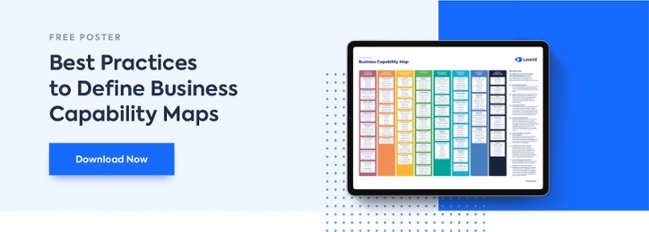
Application rationalization is a cost-saving necessity in the current climate. What, however, does the process of "rationalization" actually look like?
Application rationalization is becoming key for enterprise architects. Across all industries, IT leaders are being asked to do more with less, and efficiency is vital.
Cutting back on the number of applications your organization pays for seems like a no-brainer. "Application rationalization", however, means more than just sunsetting applications to save money.
Put simply, application rationalization means making sense of your application portfolio. This involves documenting it, organizing it, and then mapping it to your business capabilities to assure you're empowering your enterprise with everything it needs with the least-possible complexity and cost.
It's all about efficiency. As well as removing unneeded applications, it can also mean actually investing in new software to better drive your organization's strategy.
In spring cleaning your house, you might decide it's finally time to replace that broken lamp you've been meaning to throw away. In the same way, application rationalization may illustrate that it's time to invest in a more-efficient and effective customer relationship management (CRM) system, for example.
Determining which applications you should discard, and which you should upgrade or invest in, can be complex without the right data. That's why the eaIX enterprise architecture management (EAM) platform is built to source and collate information on your entire application portfolio to make your application rationalization decisions simple.
Let's dive a little deeper into what we mean by rationalization by considering what an 'irrational' application portfolio looks like and how it might come about.
Application: Irrational
The easiest way to explain application rationalization is to show what an irrational application portfolio looks like. We suspect, however, that you're already intimately familiar with it.
Let's run through a list of signs your application portfolio is in desperate need of rationalization and see if any are familiar:
5 signs you're in need of application rationalization:
- You have applications in your portfolio that serve no clear purpose
- Several of the applications in your portfolio serve the same purpose or have crossover capabilities
- You're spending more than necessary on some applications due to hosting issues or cheaper alternatives being available
- There are better applications available than the ones you have at no greater cost
- You're paying for applications that few people in your organization actually uses
Why Does Application Rationalization Become Necessary?
It's very likely the above description of application 'irrationality' is familiar to most of us. It's all too easy for an application portfolio to become mired in chaos, but why?
What happens to an application portfolio that leaves it in an irrational state and makes regular application rationalization necessary?
In our experience with our customers, we tend to see three issues that cause application portfolios to devolve:
1. Organic growth
Given the state of the market and the ongoing impacts of global events, fast, short-term, unco-ordinated decisions have become increasingly necessary. Reacting immediately to a threat can often leave you with a technical debt.
2. Mergers and acquisitions
Two companies means twice as many applications and each set will likely be preferred by the team that has used them in the past. This can often leave teams siloed in different applications when transitioning all users to either application would be preferable.
3. Neglect
Neglect is a harsh word, but application rationalization can be seen as an administrative task that can be left to fall to the wayside in troubled times. Even a brief period when your application portfolio is left to grow without oversight can create chaos.
So What Is Application Rationalization?
We've now explored what an application portfolio looks like without application rationalization and why it gets to that state. Now, let's look at the solution for avoiding an irrational application portfolio.
If an 'irrational' application portfolio is one where that doesn't make sense, then rationalization is, therefore, the process of making sense of your software landscape.
Application rationalization ensures your applications:
- support a needed business capability
- be the only application covering that business capability
- have the best technical and functional fit for its purpose within your budget
- achieve cost-effectiveness, both in itself and in the method by which it is hosted and managed
- be actively used and appreciated by the users within your organization
These five standards show that an application makes sense within your portfolio. If you apply these to every application within your tech stack, you can be certain that your portfolio is offering the highest-possible return on investment.
Application rationalization, however, isn't just a one-and-done process. Organic growth can see your portfolio shift back into irrationality over time.
As such, application rationalization needs to be an ongoing effort. That means it needs to have an established process and that's worth investing in to ensure success.
How Do You Go About Application Rationalization?
We've written extensively about best practice for application rationalization, and this is where the LeanIX enterprise architecture management (EAM) platform comes in.
Our platform allows you to:
- Inventory your applications through automated APIs and user surveys
- Map each application to business capabilities
- Evaluate each application for portfolio fit
- Design your target application portfolio
- Develop a roadmap to move from your current to target state
Using the automation and data visualization tools within our EAM platform, our clients have been able to:
- Cut application costs by USD 1.2 million per year
- Remove up to 30% of redundant applications and IT components within six months
- Free up USD 1.3 million in financial resources to invest in innovation
To find out more about how the LeanIX EAM platform can support your application rationalization process, book a demo.



